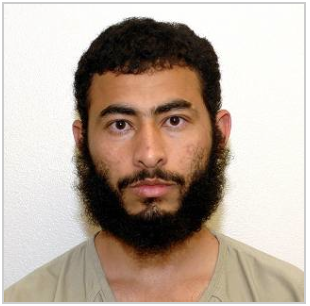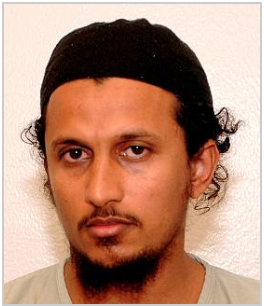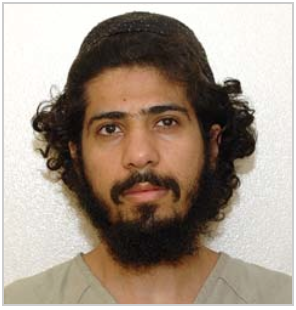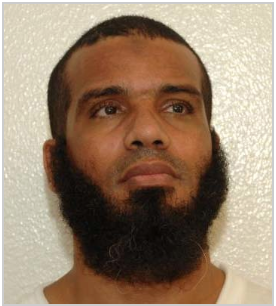The Defense Department announced on Nov. 20 that five detainees held at Guantanamo Bay, Cuba were transferred to two nations. Three of the detainees were transferred to the Government of Georgia, while the other two were transferred to Slovakia.
Four of the transferred detainees are Yemenis: Abdel Ghalib Ahmad Hakim, Hussein Salem Mohammed, Slah Muhamed Salih al Zabe, and Abdul Khaled Ahmed Sahleh al Bedani.
Hisham Bin Ali Bin Amor Sliti, the fifth detainee transferred, is a Tunisian.
All five of the detainees were evaluated by President Obama’s Guantanamo Review Task Force, which was established in January 2009. The task force concluded its work one year later and in its January 2010 report recommended that all five be transferred.
The task force did not conclude that the men should be outright released, but instead said they should be transferred outside of the US to a country that “will implement appropriate security measures.” That is, the task force concluded that all five detainees pose some level of risk, but not enough to keep them in US custody indefinitely.
Leaked Joint Task Force – Guantanamo (JTF-GTMO) threat assessments
Prior to the establishment of the Guantanamo Review Task Force, Joint Task Force Guantanamo (JTF-GTMO), which oversees the detention facility, wrote threat assessments for all five detainees. The assessments were subsequently leaked online.
JTF-GTMO assessed that three of the five were “high” risks to the US, its interests, and allies: Sliti, Hakim, and Mohammed. The threat assessments for all three recommended that they remain in the Defense Department’s custody.
JTF-GTMO found that Zabe “poses a medium to high risk, as he is likely to pose a threat to the US, its interests and allies.”
And the fifth who was transferred, Bedani, was deemed a “medium risk, as he may pose a threat to the US, its interests and allies.”
JTF-GTMO recommended that both Zabe and Bedani be transferred to the custody of other nations. Zabe was recommended for transfer on Sept. 3, 2004, while JTF-GTMO recommended that Bedani be transferred as early as Dec. 16, 2006. However, JTF-GTMO’s recommendations were contingent upon appropriate security measures being in place.
JTF-GTMO biographies for each of the five detainees
The JTF-GTMO threat assessments contain details and allegations concerning each of the former detainees’ ties to al Qaeda and affiliated groups. The short biographies below are based entirely on the leaked JTF-GTMO files.
Abdel Ghalib Ahmad Hakim (internment serial number 686) is a Yemeni and was transferred to Georgia. Hakim was assessed by JTF-GTMO “to be a member of al Qaeda” and possibly “accompanied Osama bin Laden…throughout Afghanistan.” He was “further assessed” to be a member of an al Qaeda cell created by al Qaeda facilitator Abu Zubaydah and al Qaeda military operations commander Abd al Hadi al Iraqi. This cell is commonly referred to as Abu Zubaydah’s “Martyrs Brigade.” Its “purpose” was to return “to Afghanistan to conduct remote controlled improvised explosive devices (IED) attacks against US and Coalition forces.”
Hakim was captured during raids by Pakistani and American forces in Faisalabad, Pakistan in late March 2002. Abu Zubaydah and numerous other al Qaeda operatives were captured during these same raids. The safehouses where Hakim, Abu Zubaydah and the others stayed were “operated” by Lashkar-e-Taiba, a Pakistani jihadist group that has long been closely allied with al Qaeda. Senior al Qaeda operatives in US custody identified Hakim as a jihadist who had trained at al Qaeda’s al Farouq camp.
Hussein Salem Mohammed (internment serial number 1015) is a Yemeni who was transferred to Slovakia. Mohammed was an “al Qaeda facilitator located in Iran (IR) providing travel and false documents to Arab extremists attempting to enter Afghanistan (AF).” Senior al Qaeda facilitator Abu Zubaydah and other al Qaeda members in custody said that Mohammed “operated out of al Qaeda supported guest and safe houses in Iran and Afghanistan.”
The details in Mohammed’s file indicate that he worked for an early incarnation of al Qaeda’s Iran-based network. While at times Iranian authorities have detained al Qaeda members, including eventually Mohammed, al Qaeda has also been allowed to operate inside Iran. During one of his stays at an al Qaeda guesthouse in Iran, “intelligence operatives took photos of al Qaeda and Taliban members who were present at the house.” Several days later, “the Iranian agents returned with false passports for those fighters.” However, Mohammed says he was detained by the Iranian police, “tried and convicted for being in Iran illegally,” and eventually transferred to Afghan custody before being turned over to the Americans. Mohammed claimed that he “was tortured while in the custody of the Iranians.” In addition, the Iranian Ministry of Intelligence and Security (MOIS) identified Mohammed “as a member of al Qaeda who had fled Afghanistan.”
Other intelligence cited in the file indicates that Mohammed had detailed knowledge of “al Qaeda members,” including Osama bin Laden’s family members, and their “activities” inside Iran, as well as their “interaction with Iranian authorities.” This knowledge “reflects” Mohammed’s “close association with al Qaeda.”
Abdul Khaled Ahmed Sahleh al Bedani (internment serial number 553) is a Yemeni who was transferred to Georgia. He was identified as an “al Qaeda associated fighter and a probable member of al Qaeda who admittedly traveled to Afghanistan (AF) to receive militant training.” He “participated in hostilities against US and Coalition forces in Tora Bora, and possibly served as a fighter” in Osama bin Laden’s 55th Arab Brigade. Bedani was “listed on al Qaeda-affiliated documents” and “has expressed his encouragement for and desires to engage in further hostilities against US forces.” The JTF-GTMO threat assessment for Bedani identifies numerous al Qaeda personalities he allegedly came into contact with, as well as al Qaeda facilities, including guesthouses, where he stayed.
Two of the noteworthy al Qaeda personalities tied to Bedani in the leaked file are an al Qaeda commander known as Abu Thabit and Ibn Sheikh al Libi, who was appointed by Osama bin Laden to lead the jihadists’ forces at the Battle of Tora Bora in late 2001. Bedani fled Jalalabad for Tora Bora in the same car as Abu Thabit, who was “second in command of a front line unit north of Kabul.” US military intelligence analysts surmised that because Bedani was so close to Abu Thabit they “likely retreated from the front lines” together. This indicated to analysts that Bedani, like Abu Thabit, served in bin Laden’s 55th Arab Brigade. At Tora Bora, Abu Thabit “commanded a multi-national camp called the Thabit Center” with a “20-man group composed of Algerians, Yemenis, Saudis, and Kuwaitis.” Bedani served under Abu Thabi’s command until his death.
Bedani attempted to escape Tora Bora, but was wounded “in a US helicopter attack during the attempt.” Bedani’s “account describes the first attempt by al Qaeda forces to escape from Tora Bora” under the direction of Ibn Sheikh al Libi, a senior jihadist who led the Khaldan camp in Afghanistan. When the escape attempt failed, al Libi instructed his surviving forces “to seek help with local villagers or enemy forces.” Afghans took Bedani to a hospital, where he remained until Feb. 2, 2002, when he was transferred to US forces.
Slah Muhamed Salih al Zabe (internment serial number 572) is a Yemeni who was transferred to Georgia. Zabe was identified as “a member of al Qaeda and/or its global terrorist network” and “has demonstrated a commitment to jihad.” He “has links to key facilitators in al Qaeda’s international terrorist network, has participated in terrorist training, likely participated in direct hostilities against the US and coalition forces, and maintains the capability to do so if released.” Zabe, a Yemeni, had lived in Saudi Arabia, so JTF-GTMO recommended that he be transferred to the kingdom, but it was “imperative” that he “be retained in the custody” of the Saudi government, otherwise military officials believed he should remain held by the US.
Zabe first traveled to Afghanistan for training in the late 1990s. He met with multiple senior al Qaeda operatives while attending al Qaeda’s training camps and guesthouses. One of them was an al Qaeda operative known as Abu Zubayr, who “was involved in attempts to destroy US and British ships in the Straits of Gibraltar” before being “incarcerated in Morocco.” Zabe lived with Abu Zubayr and his family in Afghanstan. After the Taliban fell in late 2001, Abu Zubayr helped Zabe flee.
Zabe was captured on Feb. 7, 2002 in an al Qaeda safehouse in Karachi, Pakistan. He was captured alongside Abdu Ali al Haji Sharqawi, a senior al Qaeda facilitator who was known as “Riyadh the Facilitator.” Sharqawi, who is still detained at Guantanamo, was responsible for shuttling al Qaeda operatives around the globe.
Hisham Bin Ali Bin Amor Sliti (internment serial number 174) is a Tunisian who was transferred to Slovakia. Sliti’s JTF-GTMO threat assessment contains a strong warning concerning the possibility of recidivism.
The Defense Intelligence Agency (DIA) assessed that Sliti was “among the top 52 enemy combatants at JTF-GTMO who pose the most significant threat of reengagement in acts of terrorism if released.” JTF-GTMO warned, “If released without rehabilitation, close supervision, and means to successfully reintegrate into his society as a law abiding citizen, it is assessed [Sliti] would immediately seek out prior associates and reengage in extremist activities.” US officials found that although Sliti “appeared cooperative during recent debriefings,” he was not providing “anything of intelligence value” and appeared to be deploying “counter-interrogation techniques.” Sliti “holds anti-US sentiment and on more than one occasion has threatened to kill members of the guard force.”
Sliti was a member of the Tunisian Combatant Group (TCG), which acted as an arm for al Qaeda in Europe prior to the 9/11 attacks. In 2004, Sliti “was convicted in absentia on terrorism-related charges for his role in TCG suicide attacks, including a foiled attack against US military personnel at the Kleine Brogel Air Base in Belgium and assassination of the Northern Alliance leader, Ahmad Shah Massoud.” The slaying of Massoud was a key part of al Qaeda’s 9/11 plan, as it removed an effective opponent of the Taliban from the battlefield prior to the onset of US-led hostilities.












2 Comments
Why release these guys?
The only real way to kill these guys is to release them. Two of them will probably be dead at the hands of the Syrian Arab Army within the year. Let them go so they can meet up with their fate.
How many released terrorists have been killed already after taking up arms yet again? More than zero.